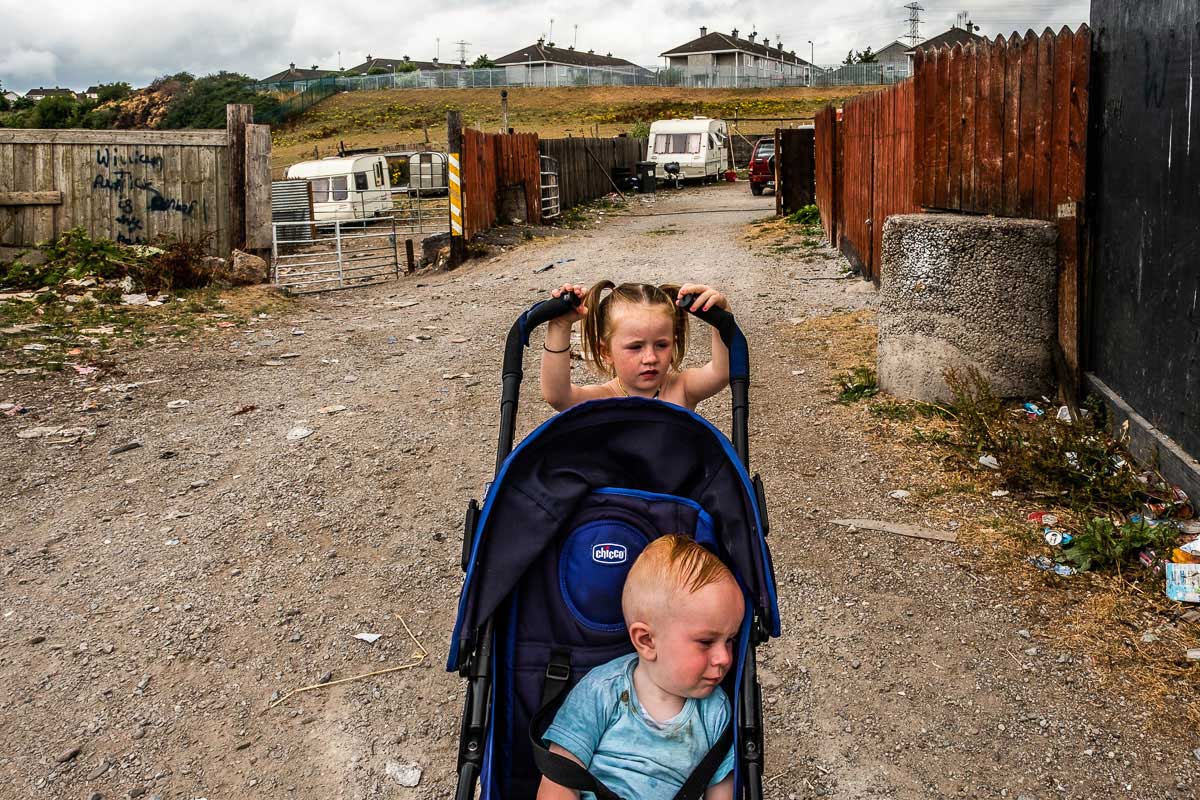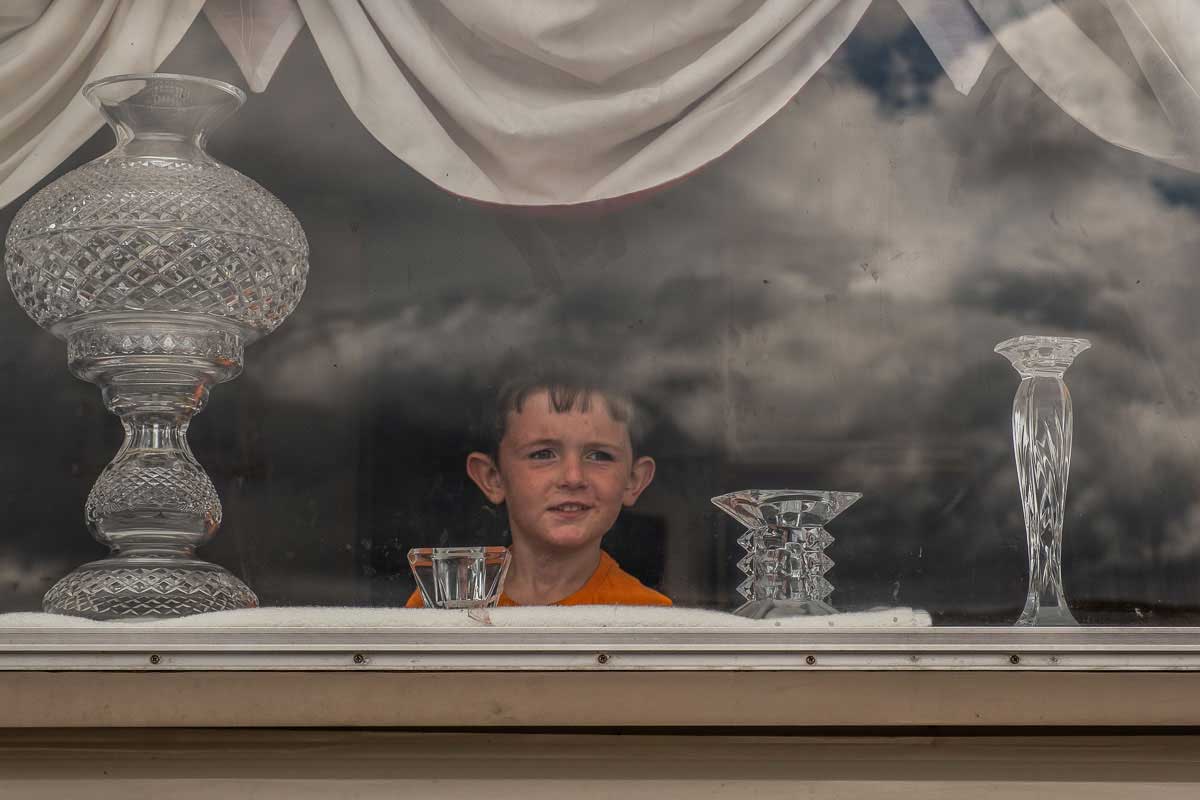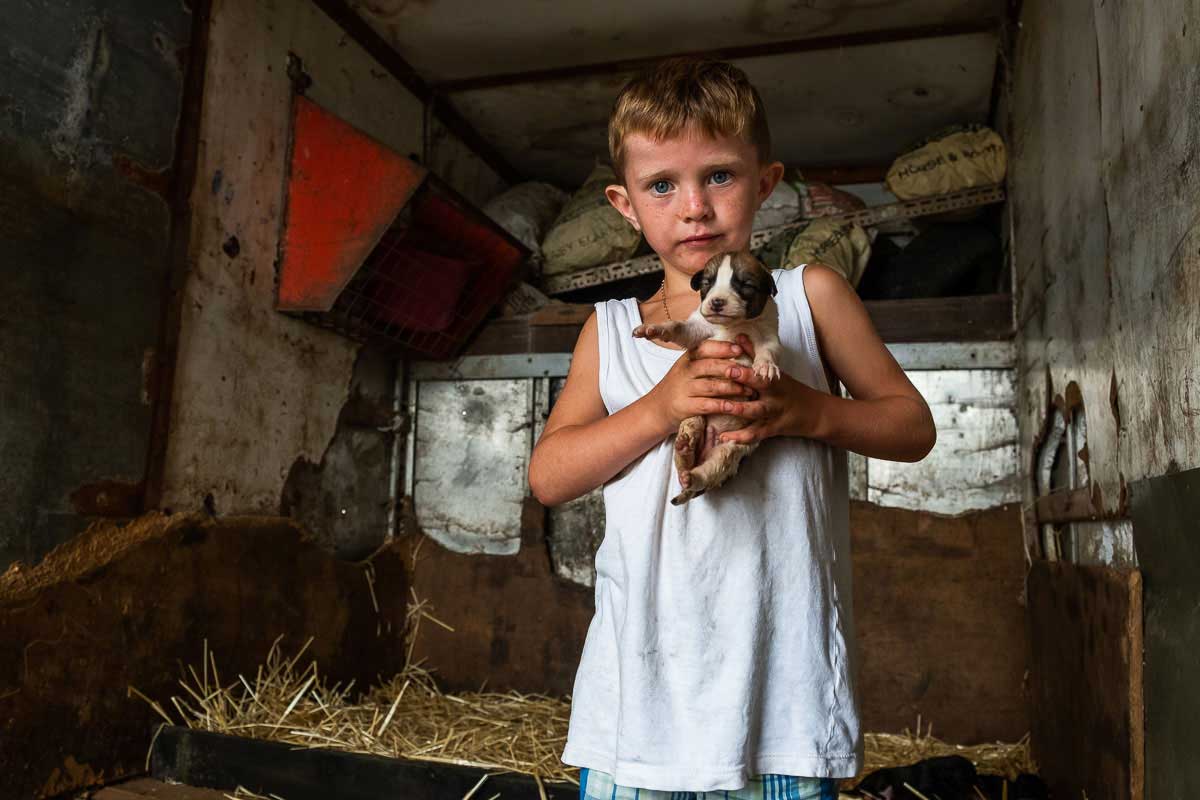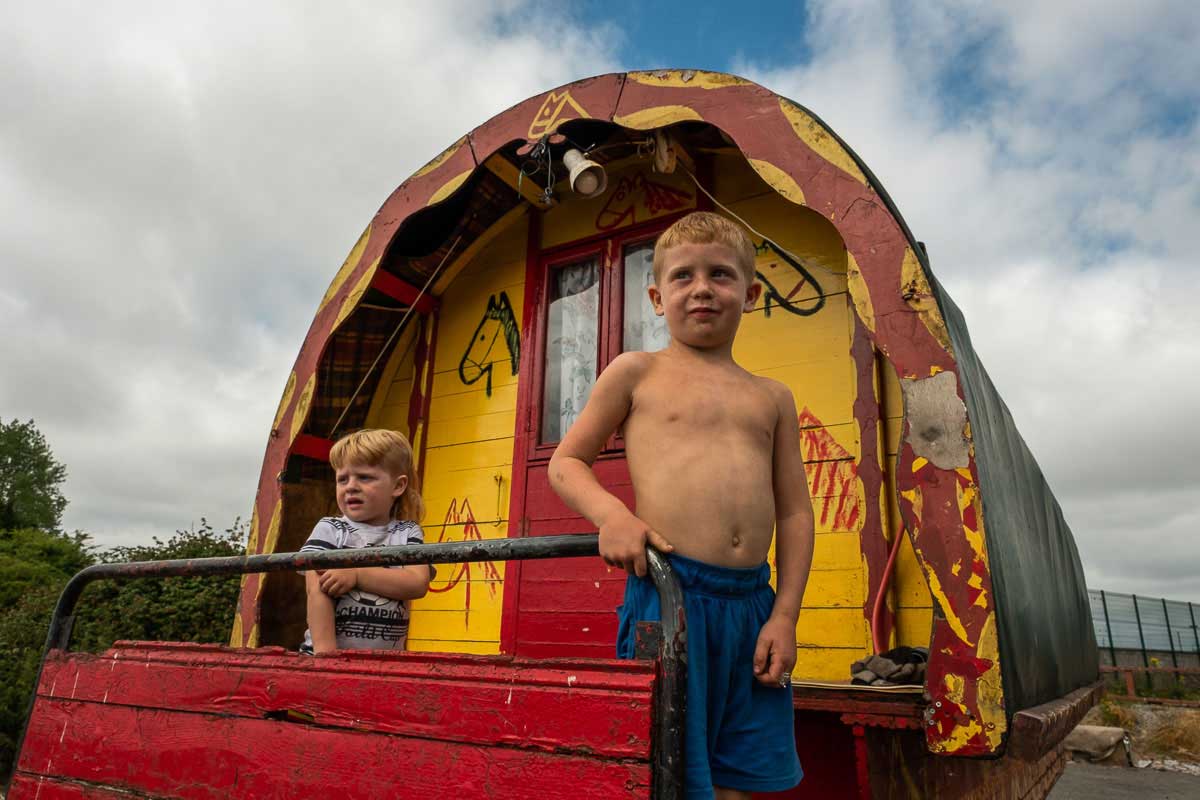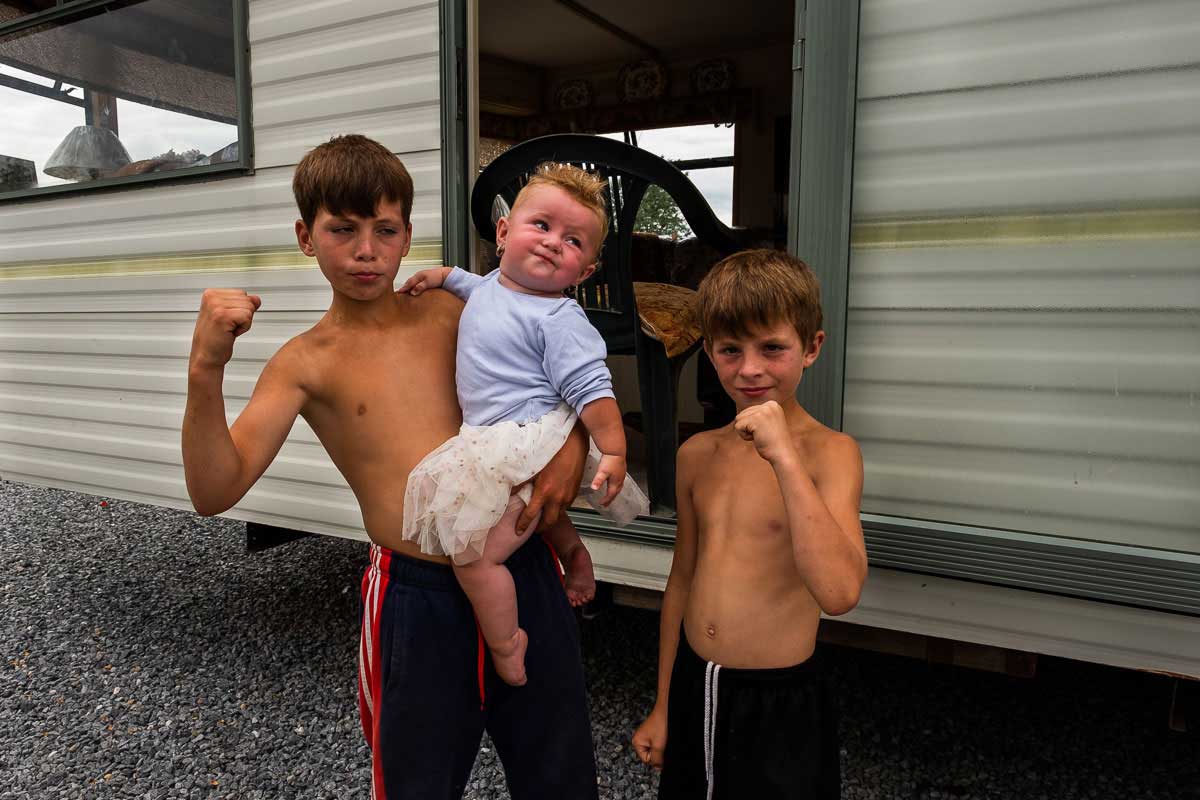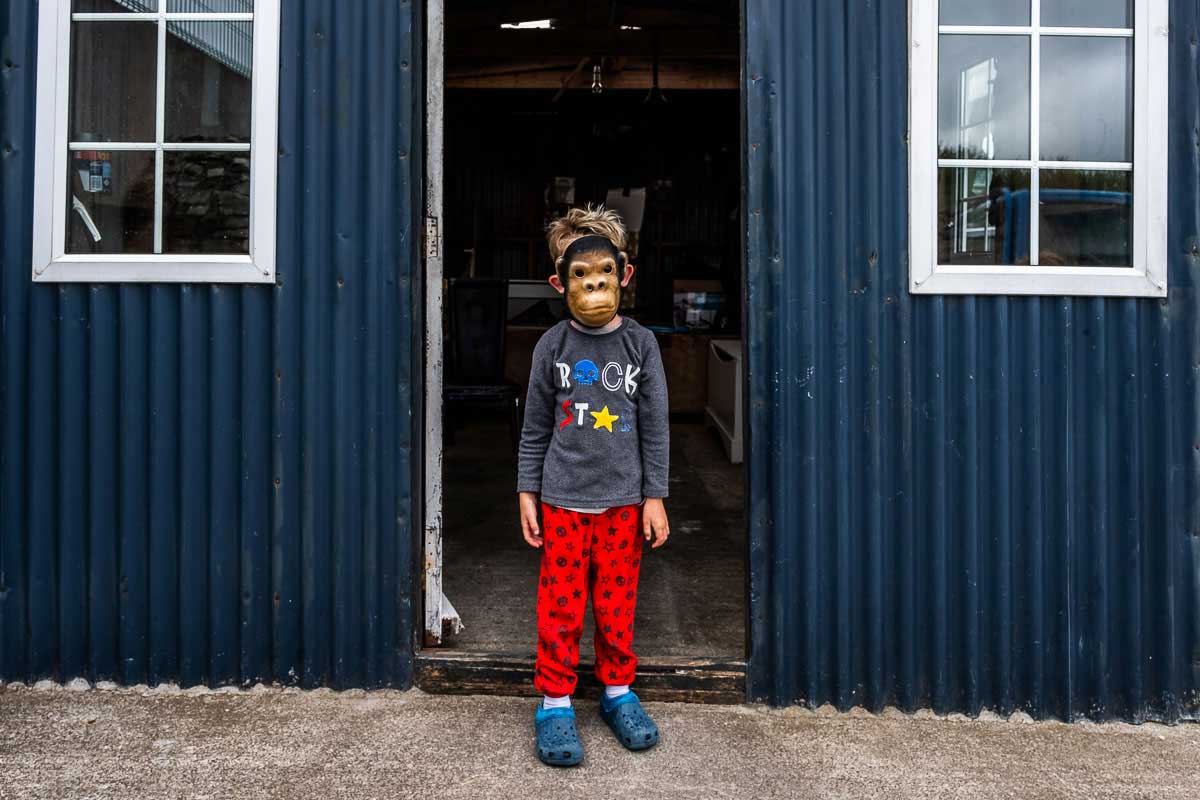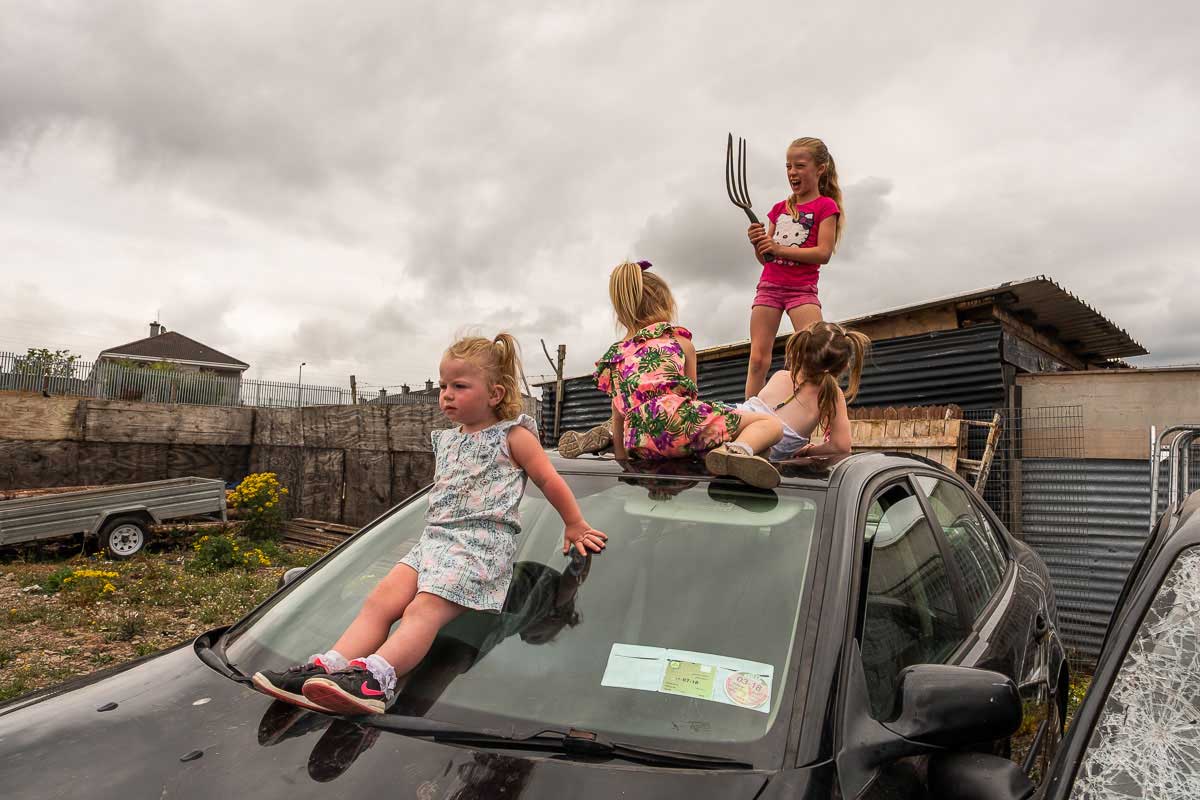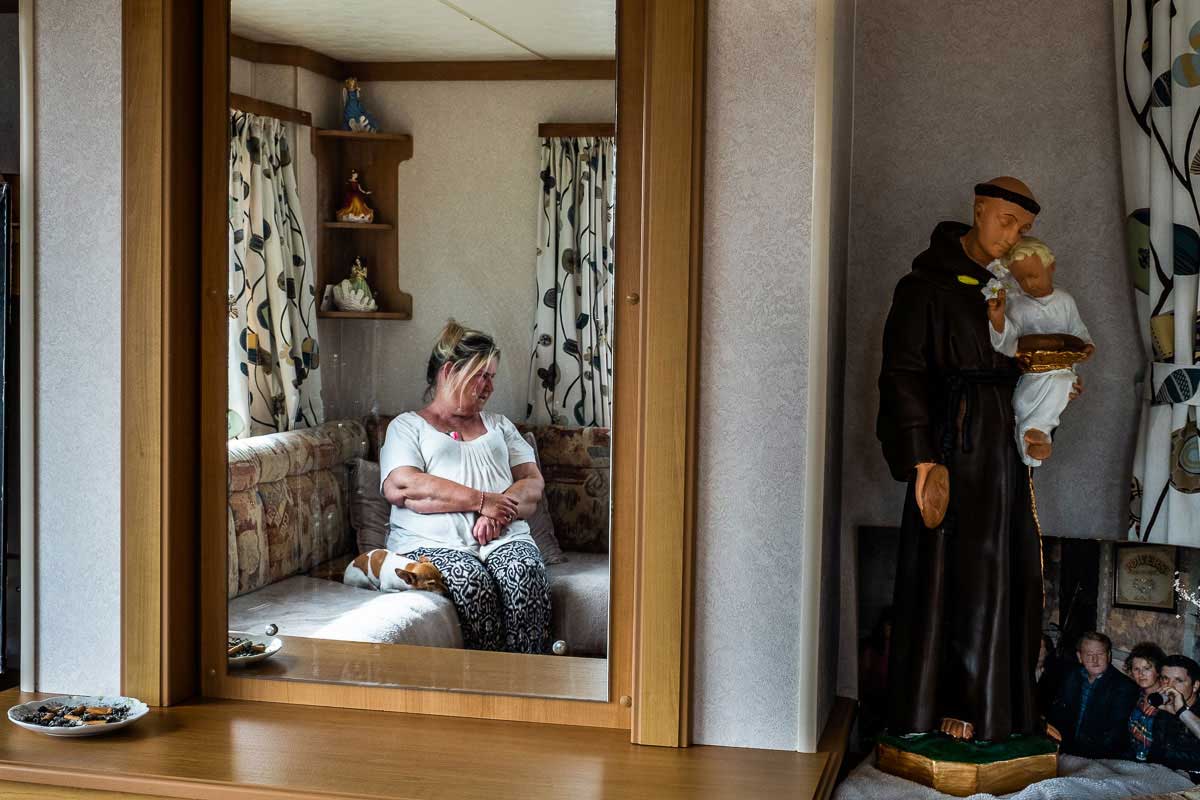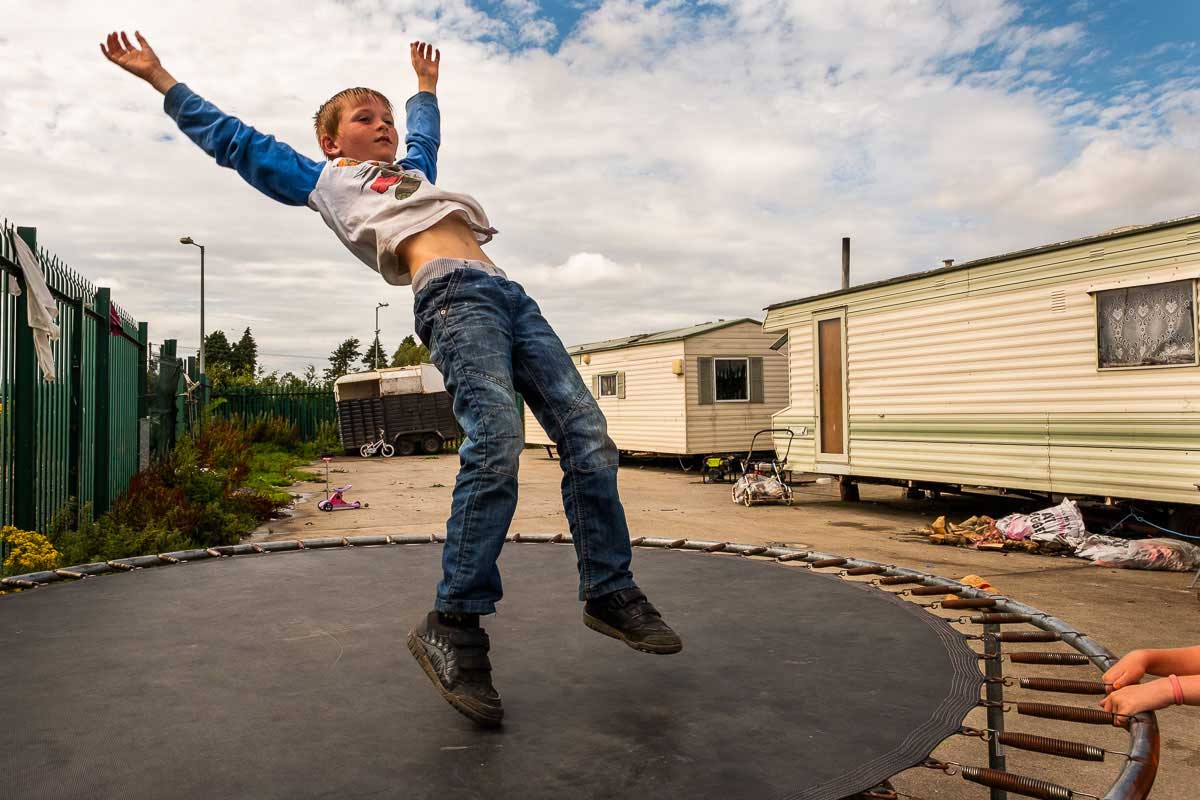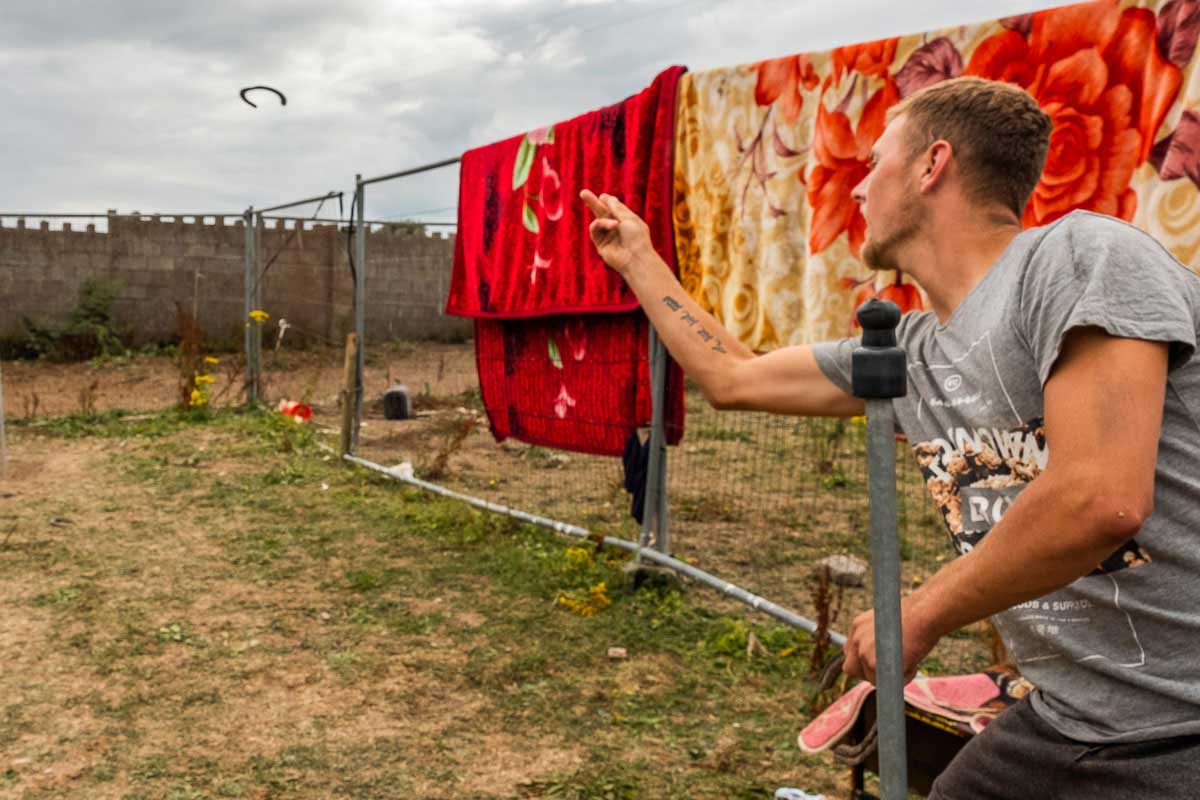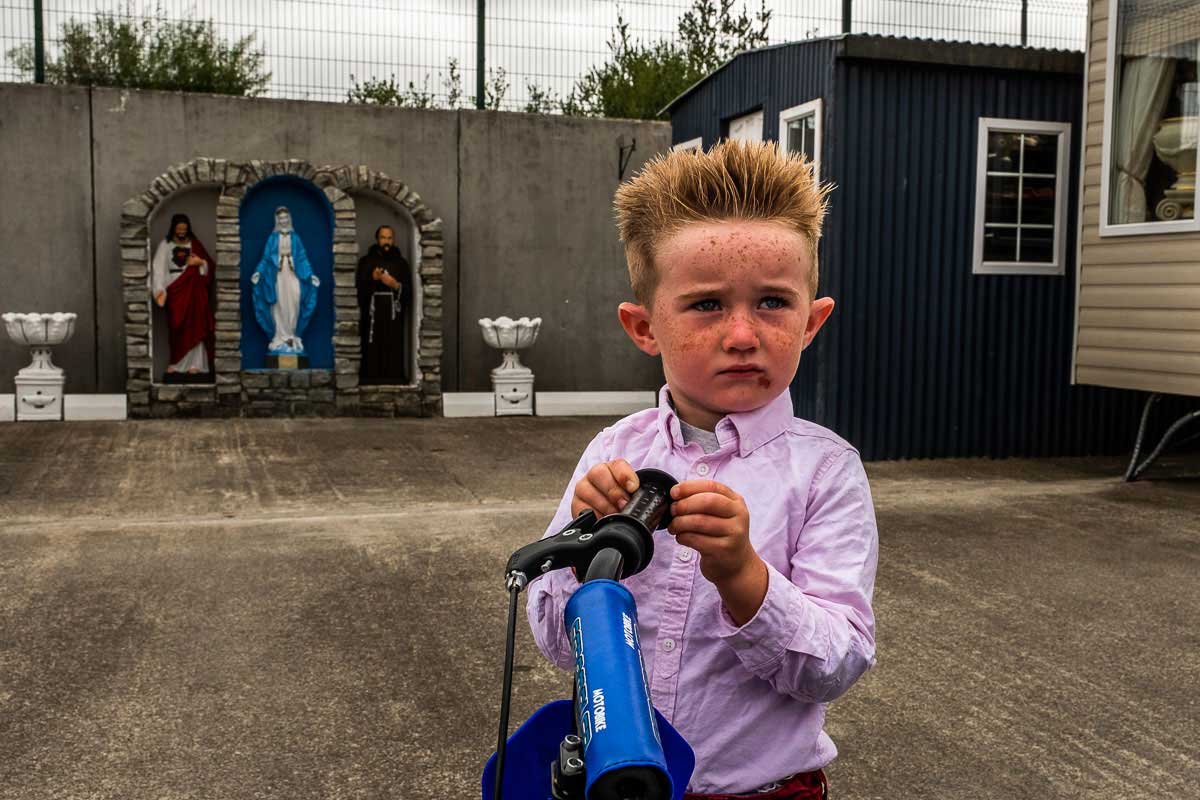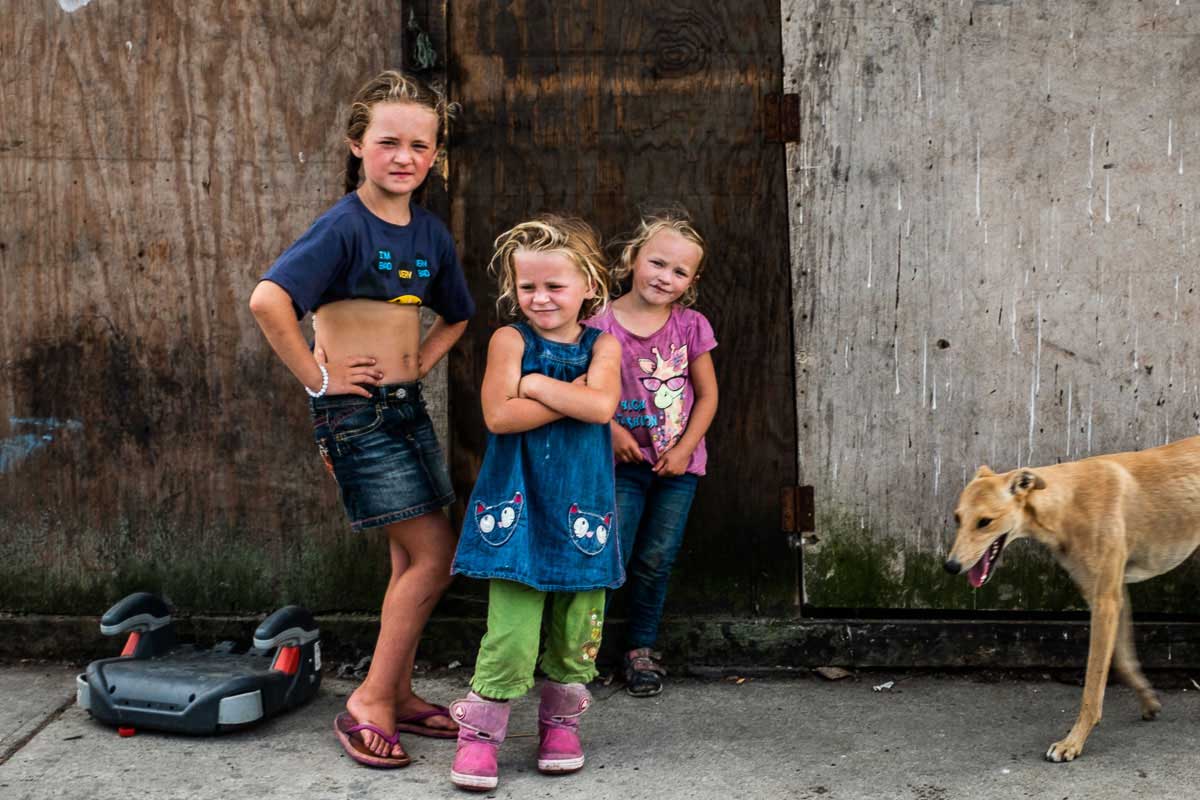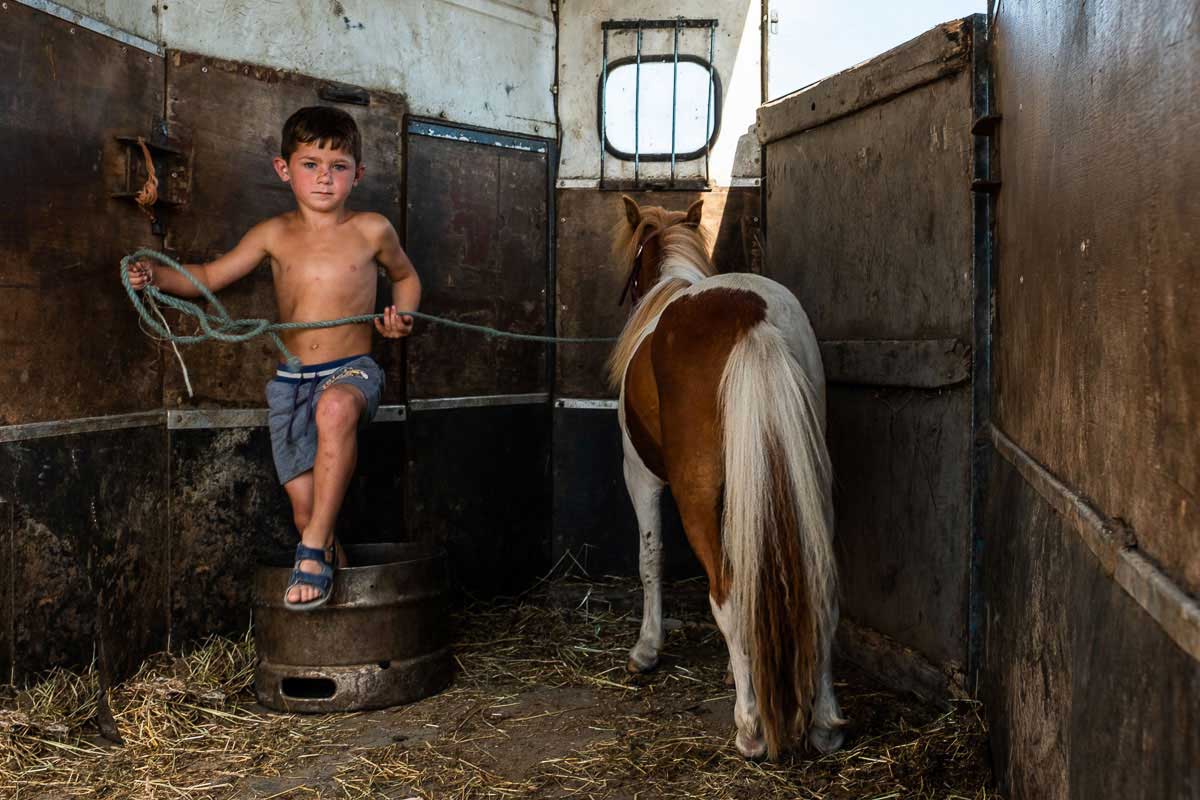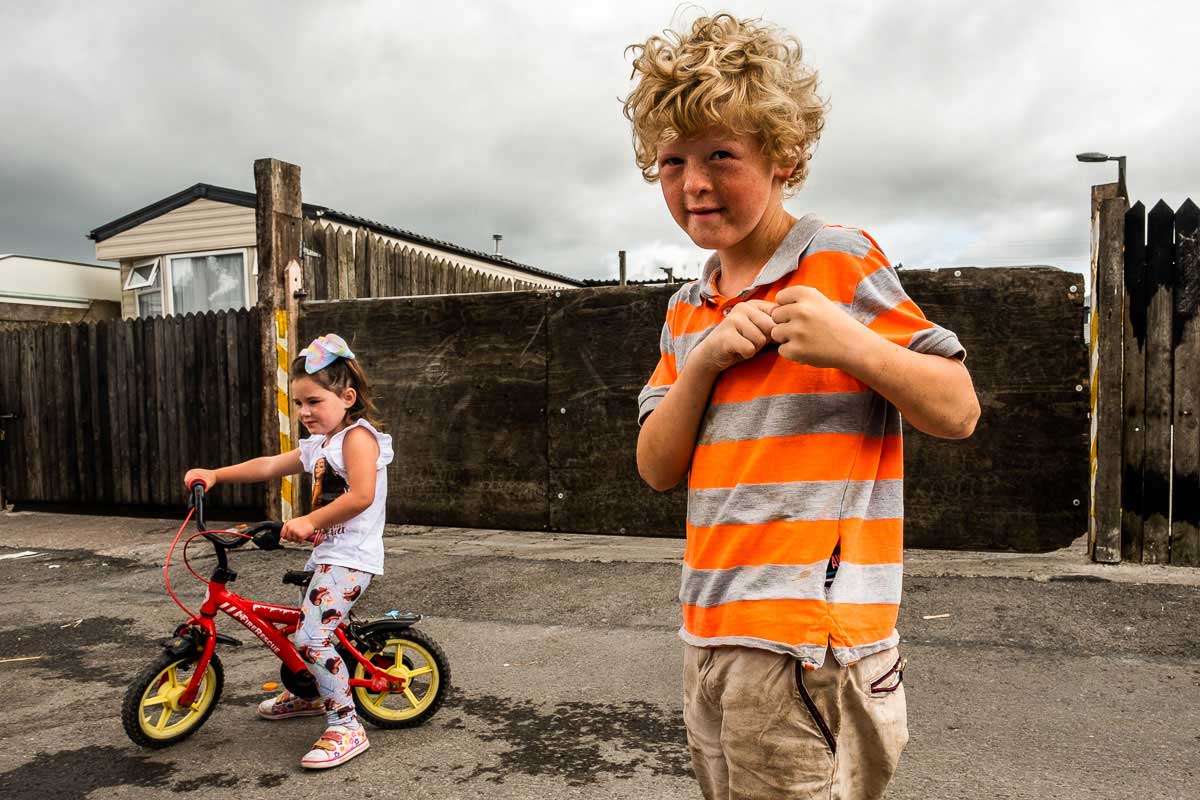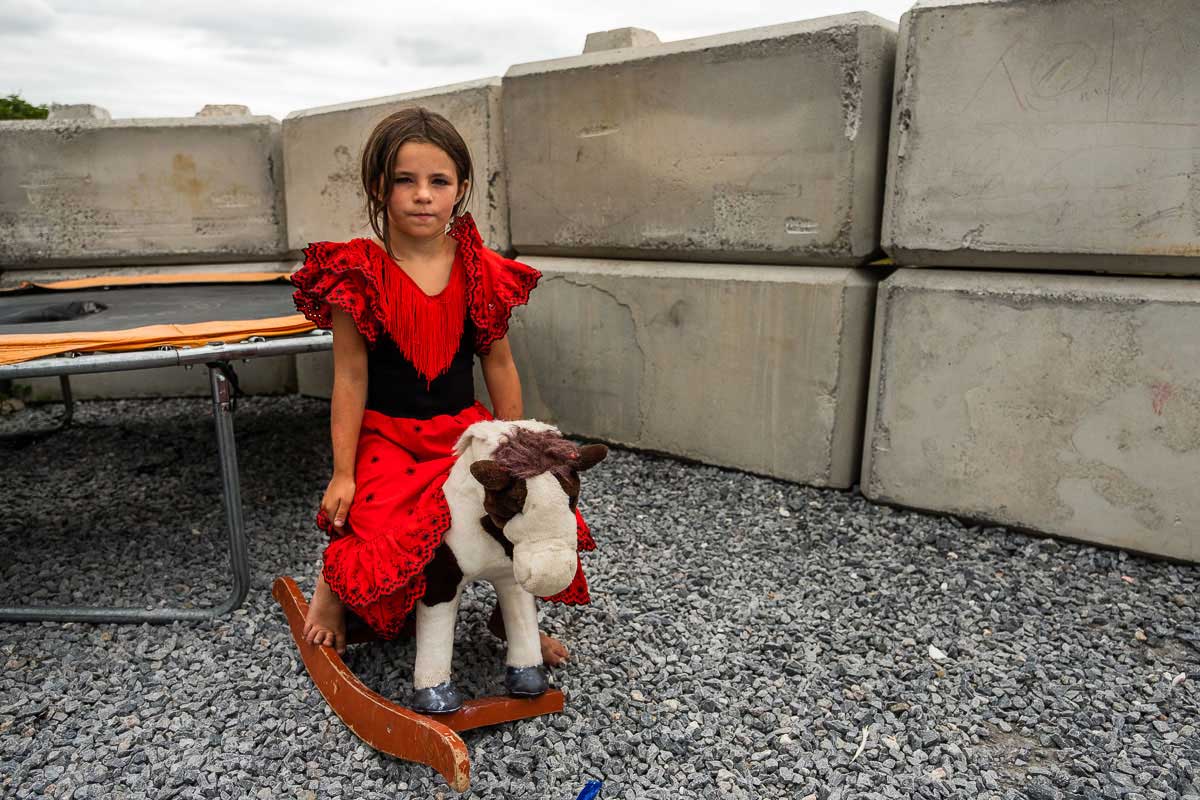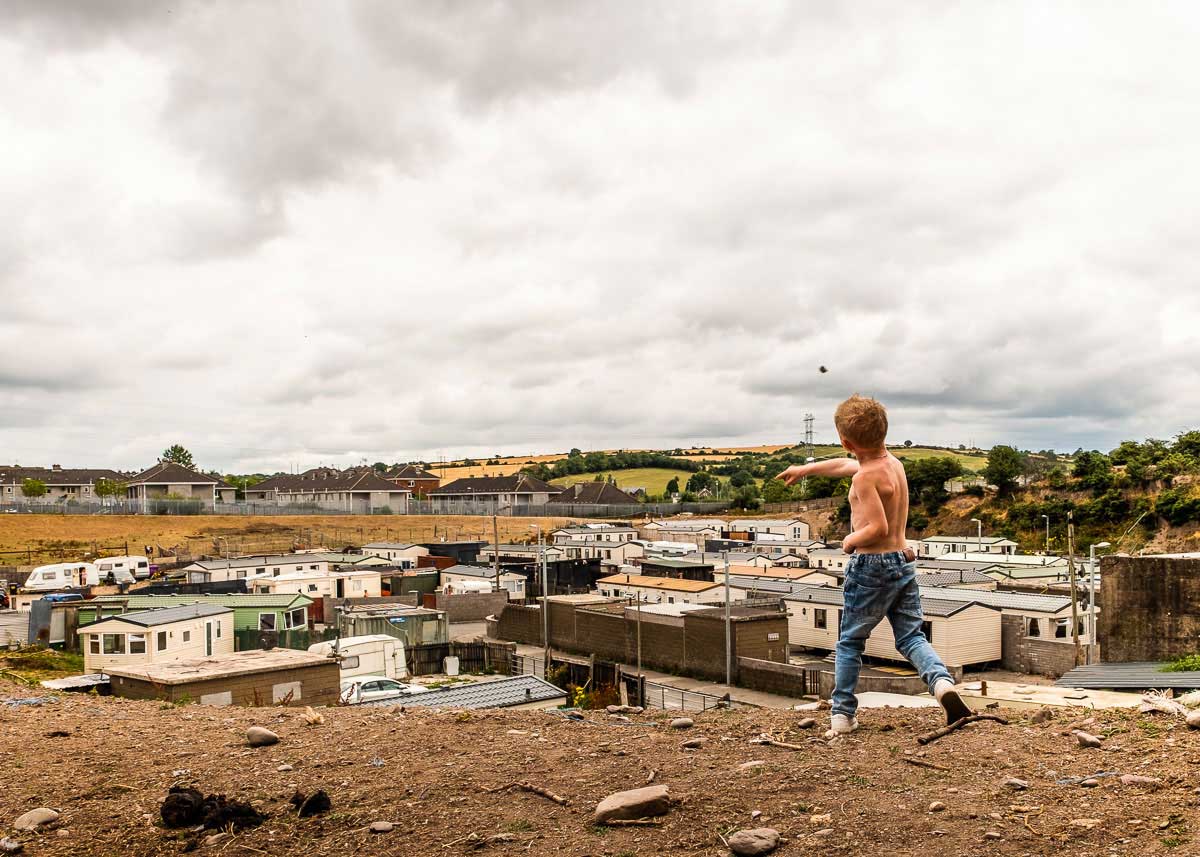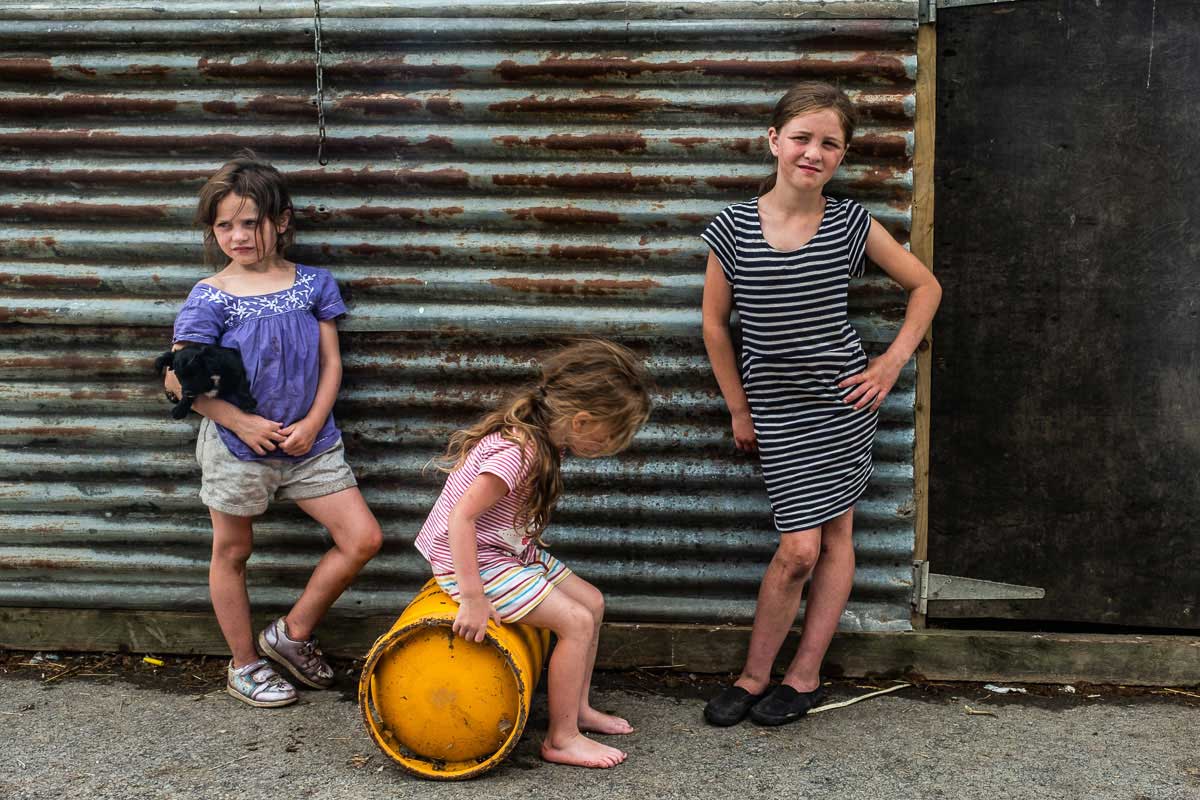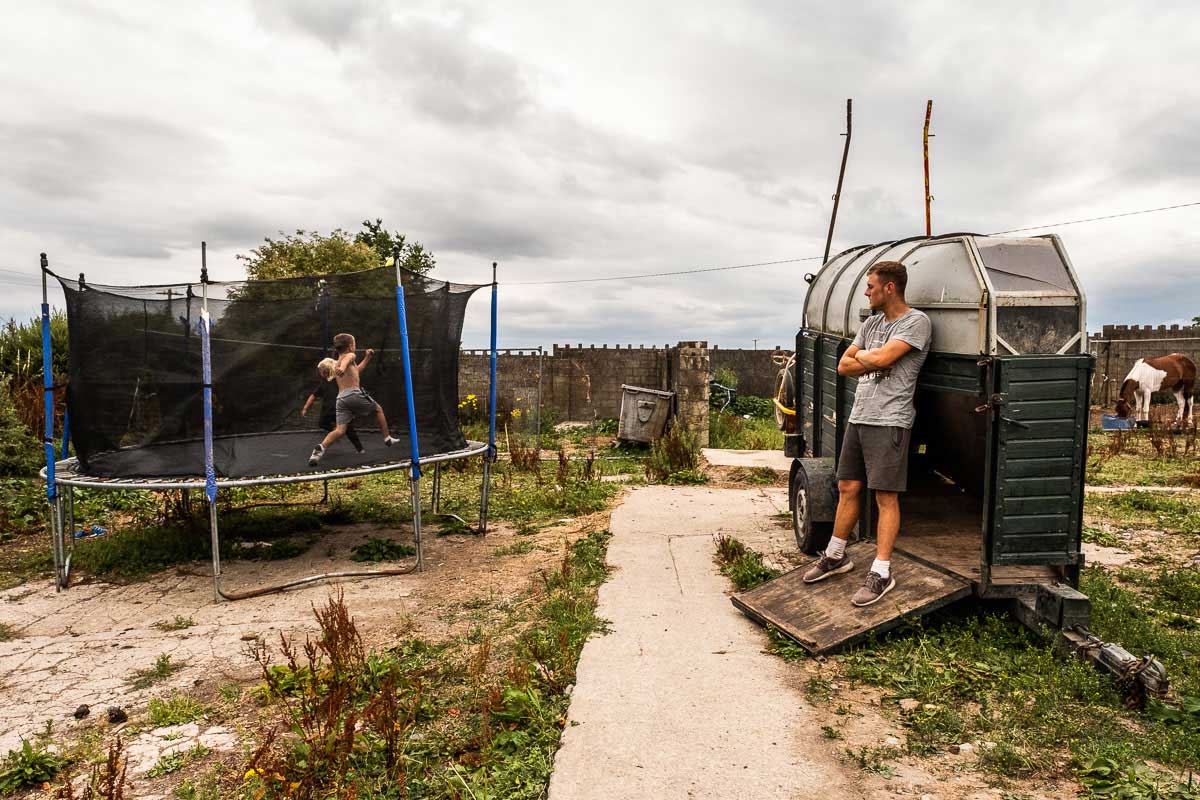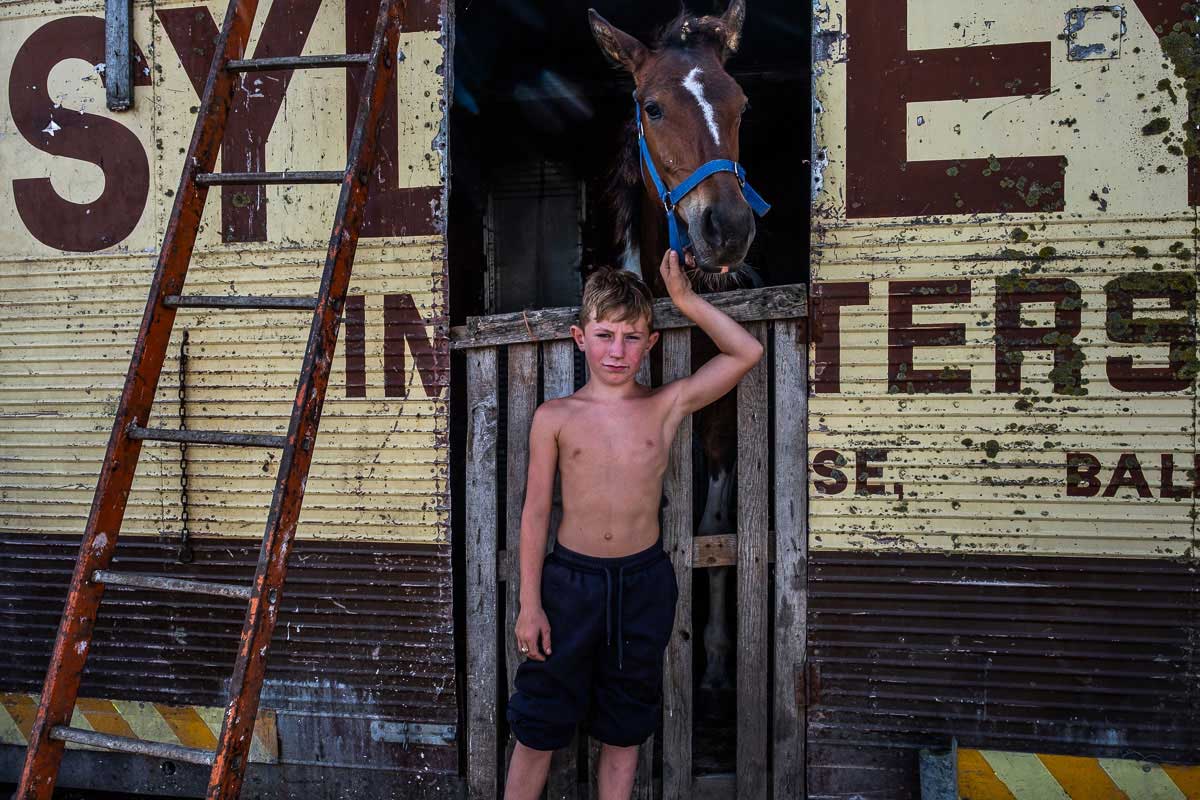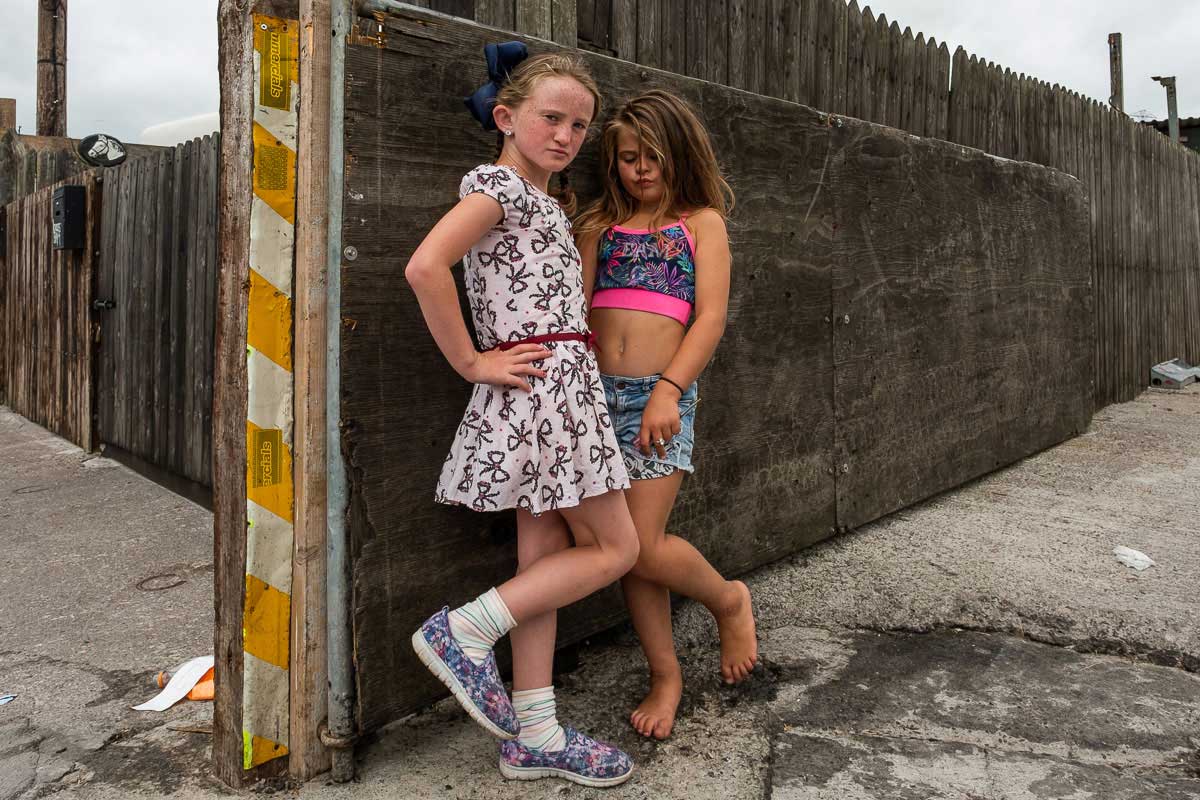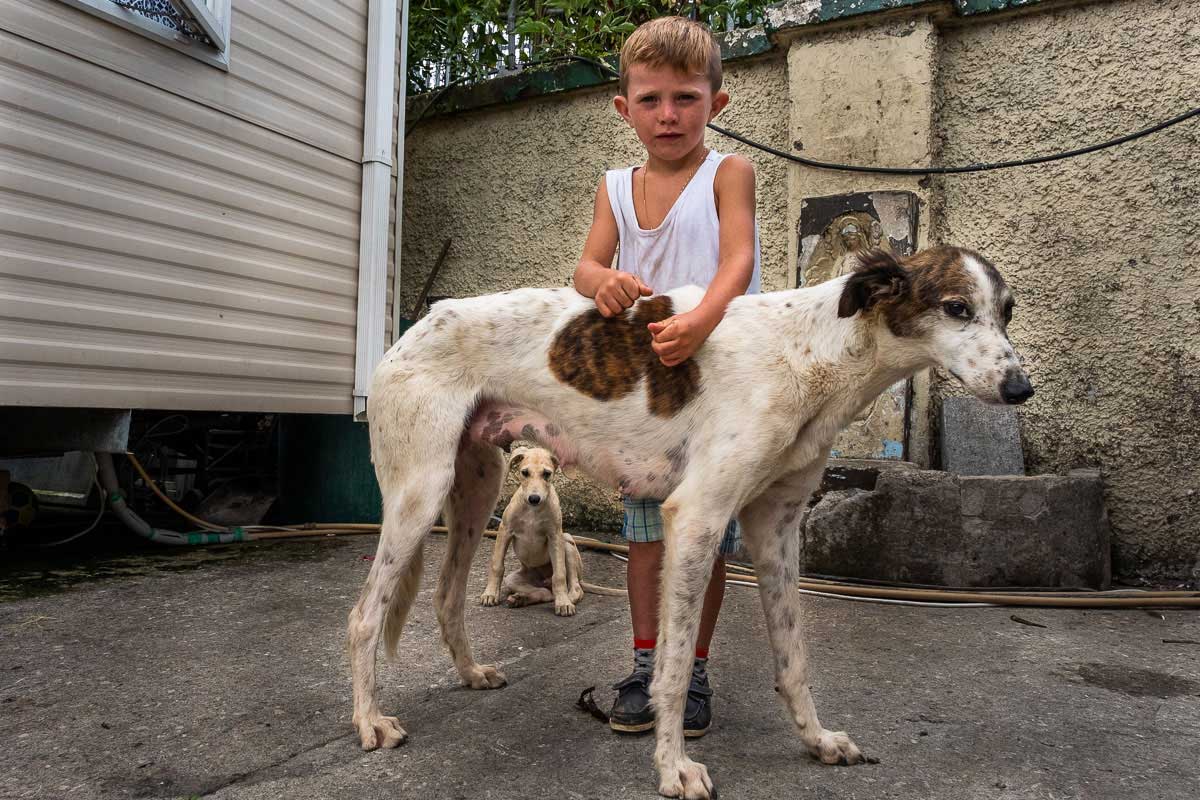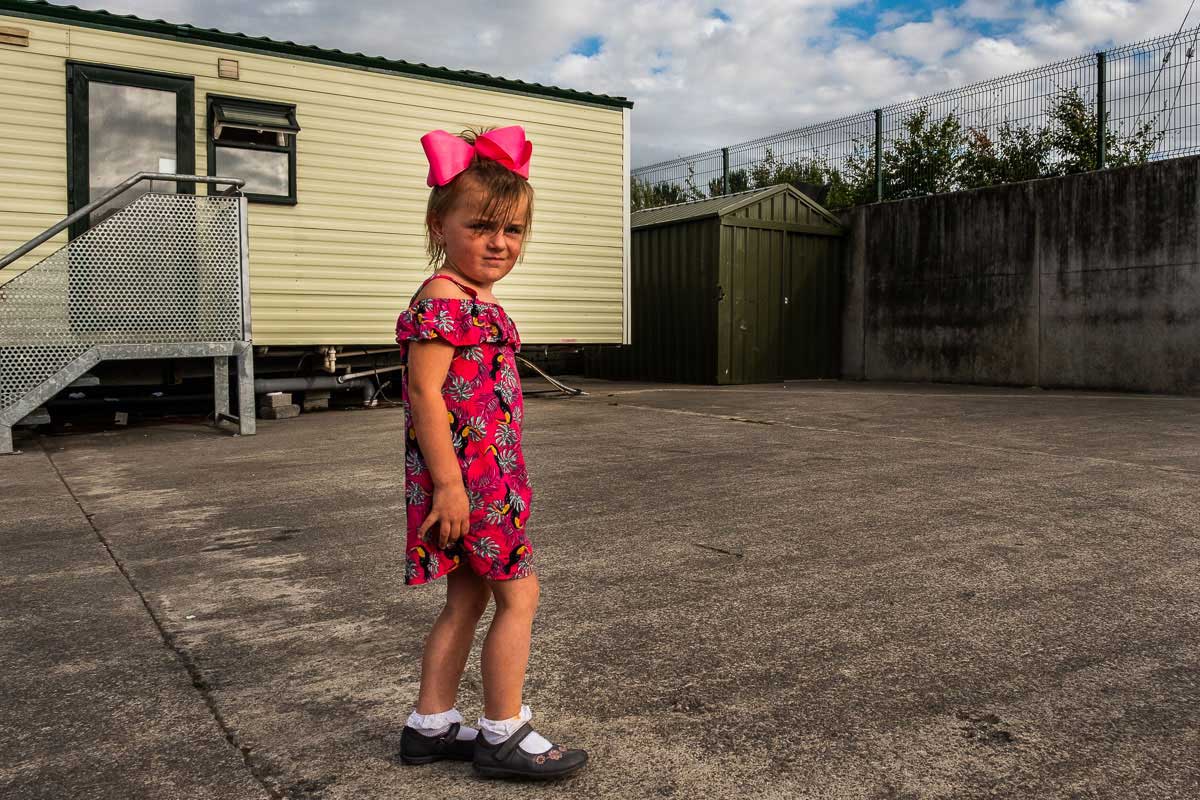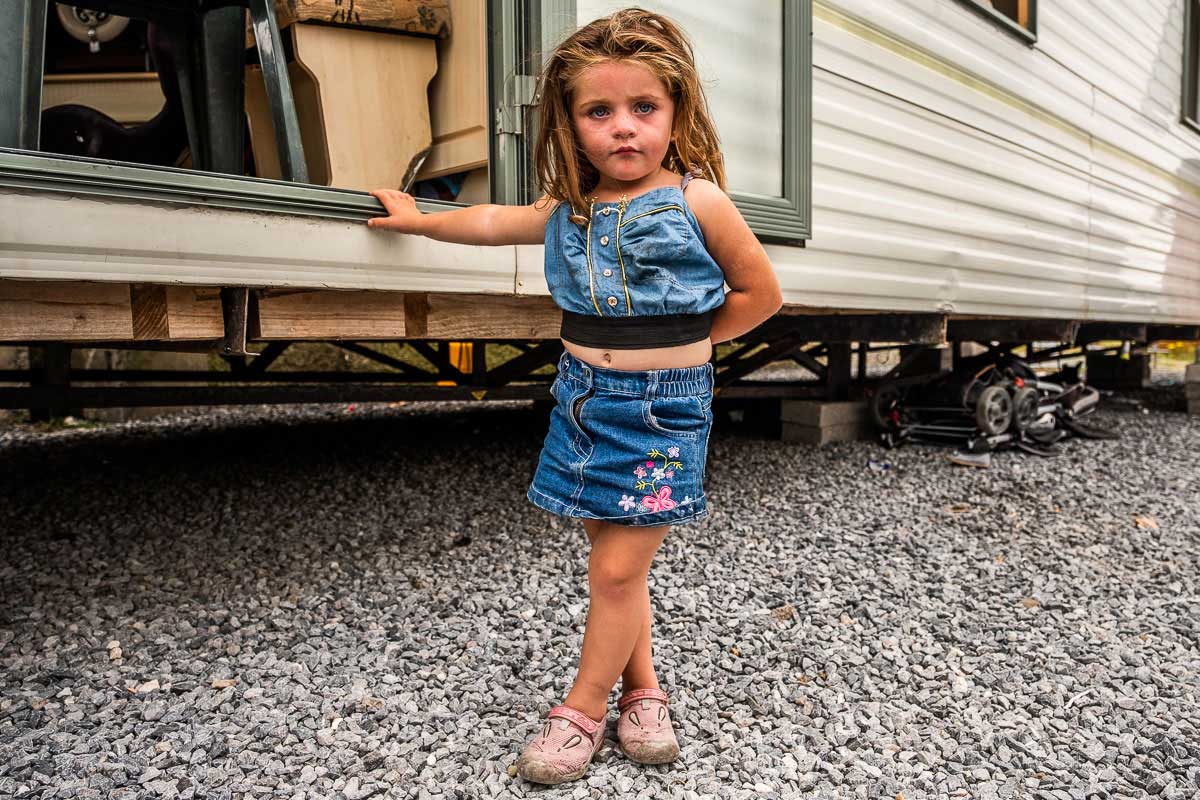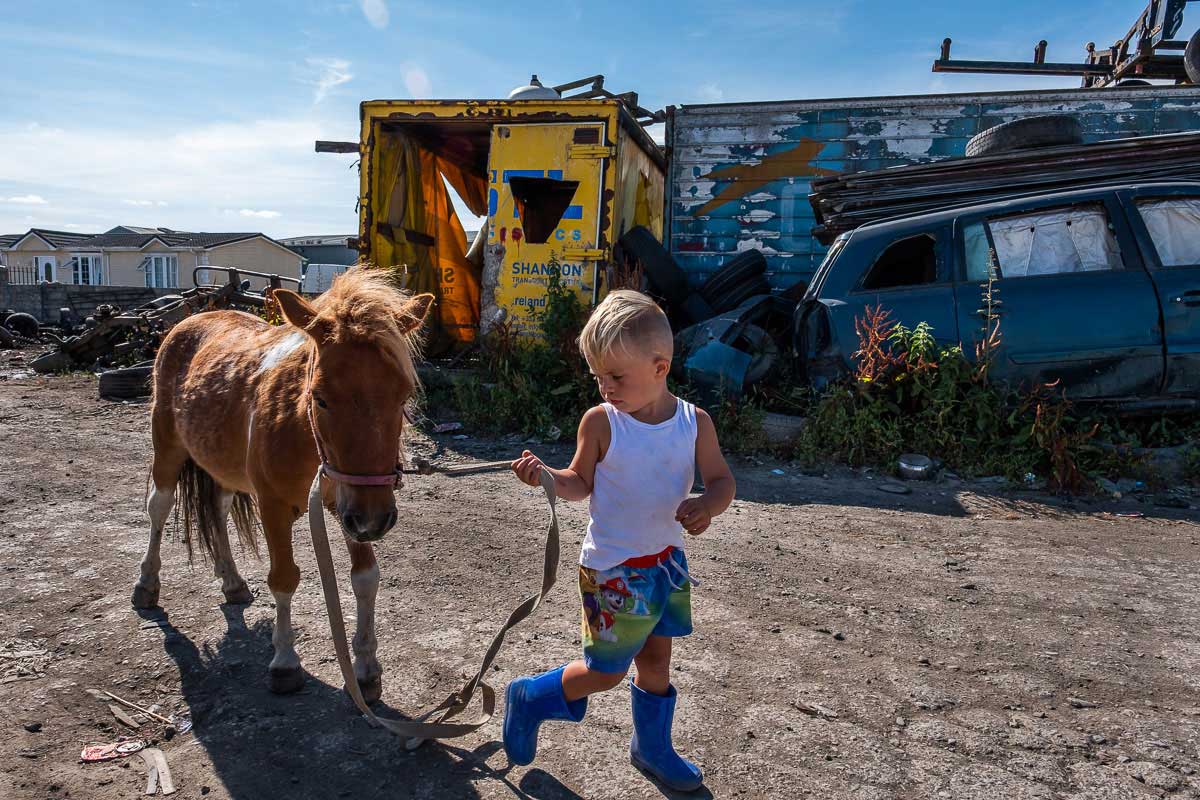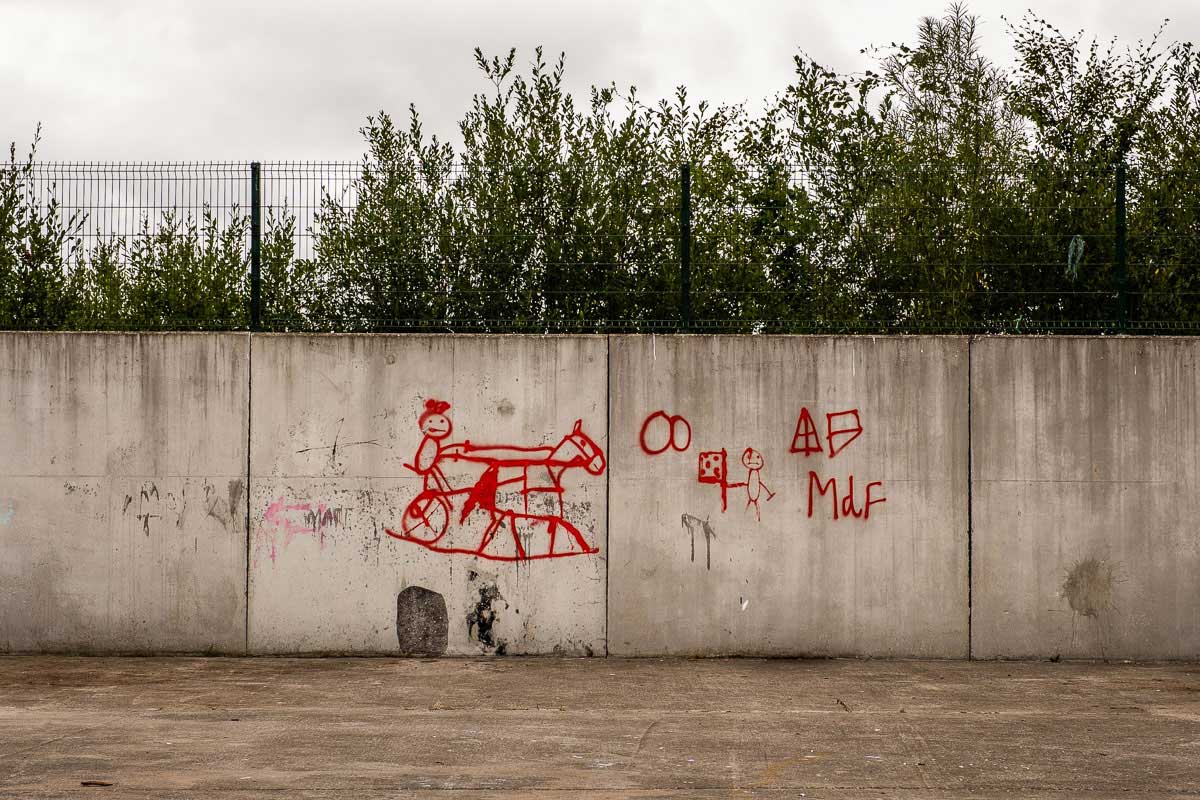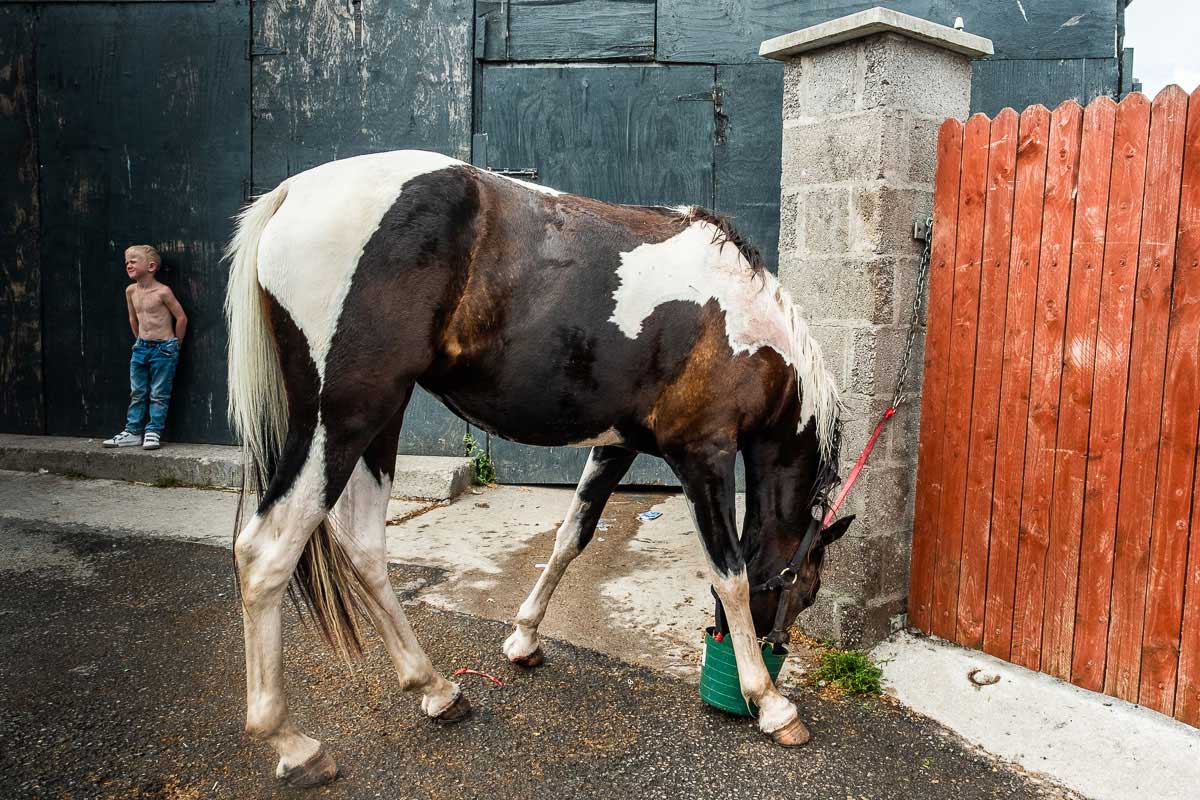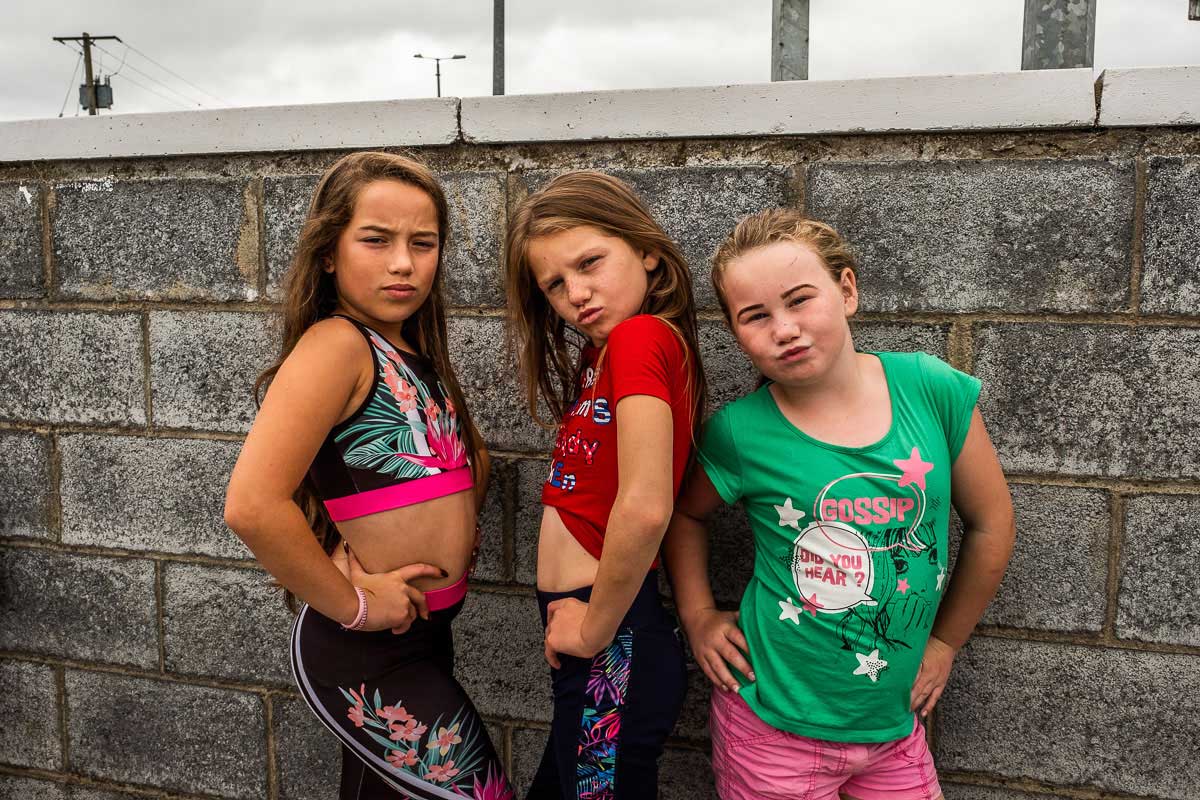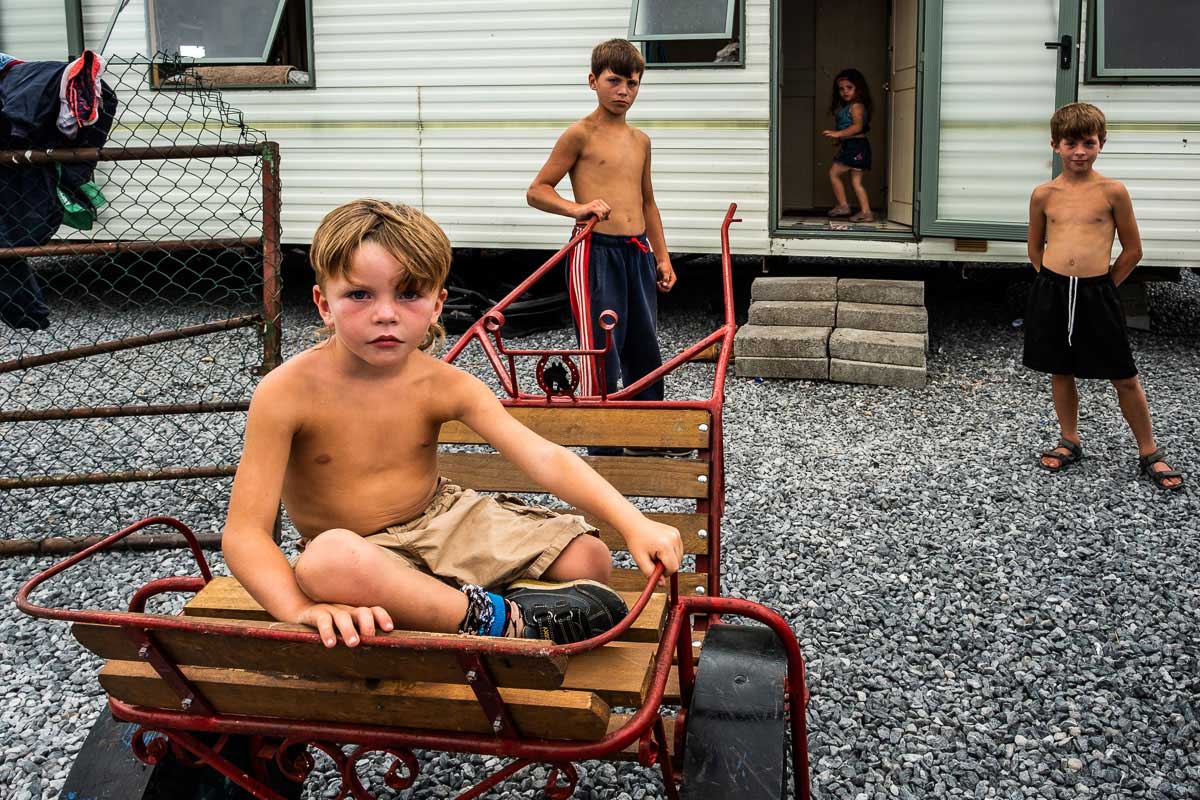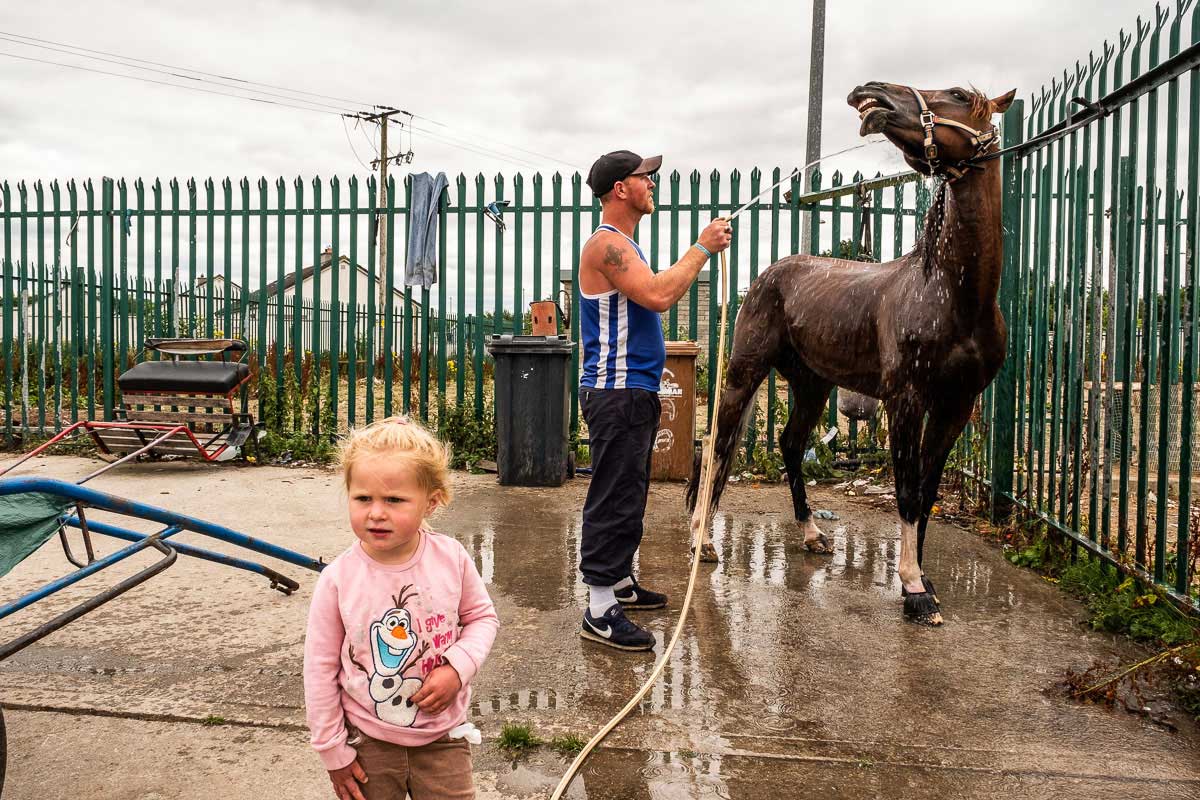The Irish Travellers, also called the Tinkers, had been nomadic for generations, travelling the countryside in horse-drawn carts and wagons.
Of course, “gypsies” and Roma” come to mind when hearing about this lifestyle, but recent genetic testing has shown that the Travellers are native to Ireland. Today the travelers are no longer nomads, the vast majority live in houses or in caravans (trailers) on official “halting” sites.
The Travellers had traveled and camped on the roadside, seldom remaining in one place for more than a couple of weeks, presumably because of the limited demand for work at any one place. But they began to suffer in the 1970s as the demand for their work decreased significantly. A movement emerged to settle travelling families on “halting sites” where they would have basic services and the children could go to school. This change in lifestyles did not come easy, particularly for the men who found themselves with very little to do as the unemployment rate is fairly high in the Travellers community (the suicide rate in the Traveller’s community is said to be seven times higher than in the population in general.) Although there are still approximately 30,000 living in Ireland they are clearly at the bottom of Ireland’s social and economic ladder. Nevertheless, this photo essay shows that the young Travellers still identify with their culture even though they now live in an environment made of concrete slabs.
The Travellers are religious and large families are the norms. Gender roles are clearly defined even for the youngest of children. When being photographed, the young boys always show their tight fists and take a fighting position. Boxing is their favorite sport, punching bags and trampoline available on most halting sites. The girls, on the other hand, quickly take a provocative pose, putting their hands on their hips and pouting their lips. Most of the girls have long hair, and wear jewelry and make-up starting at a very young age.
But perhaps the stronger link to the culture is the connection to animals. Most Irish Travellers are raising dogs, especially greyhounds, with lots of puppies around. Horses are especially important for the Travellers. Though keeping a horse in a halting site can be challenging and costly, the Travellers dearly want to maintain that part of their culture, and want to share this passion with their sons. (Dealing with the horses still seems to be primarily a male activity in the Traveller’s community.)
As Ned, the father of nine beautiful children told me, “We are not travelling anymore, but we are still Travellers and we need our horses. It gives us something to do.” And it gives a meaning to their lives.
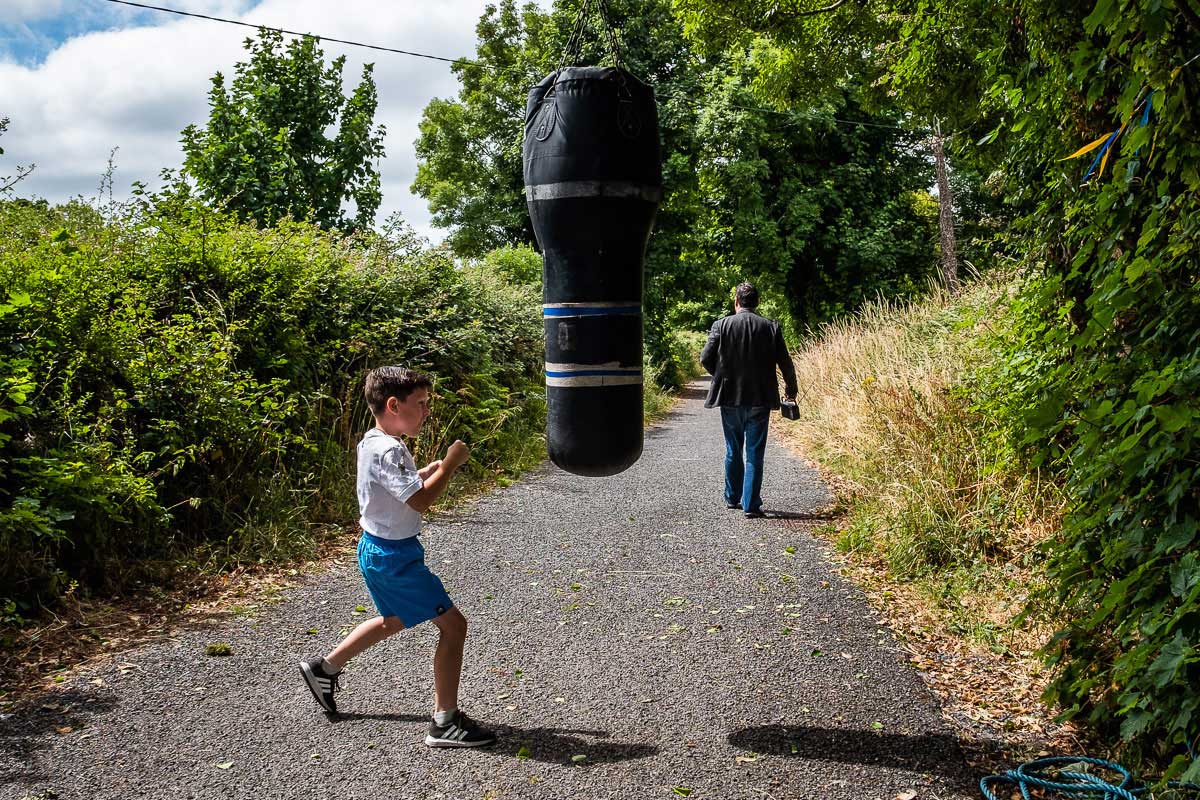
About France Leclerc
France Leclerc, born in Québec, Canada, is an independent photographer who currently lives in Chicago. Her early career was in academia, but in 2005 she decided to make a change to pursue her true passion for documentary photography. But the curiosity and hunger for learning that had motivated her academic research career did not vanish. France now uses photography as vehicle to understand and help depict issues that puzzle her, and satisfy her passion for learning. Among her most prominent themes are culture, religion and poverty. Her images have now been shown in curated exhibitions and have won numerous awards, including an APA award in the photojournalism category and a PDN WorldinFocus award. [Official Website]
